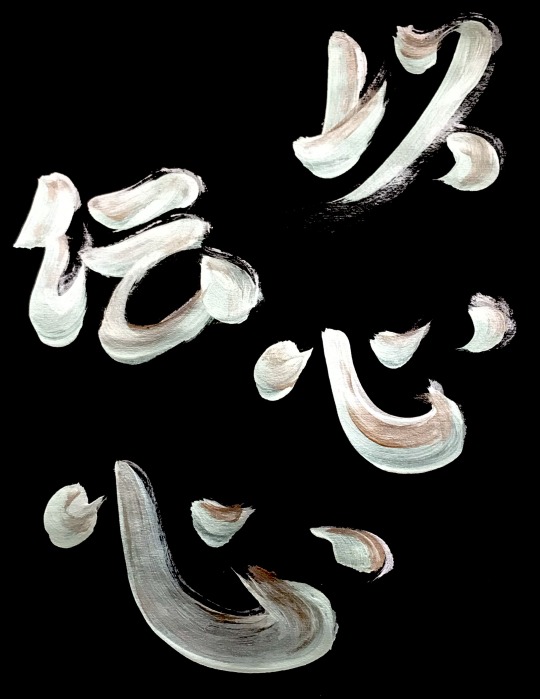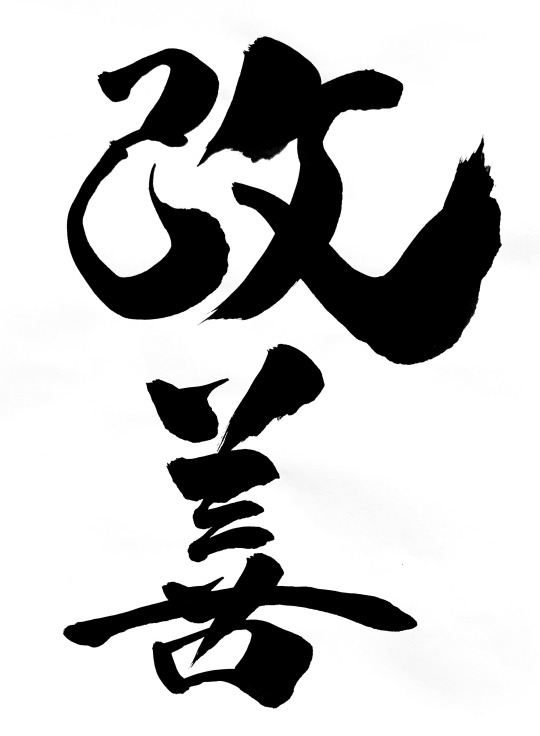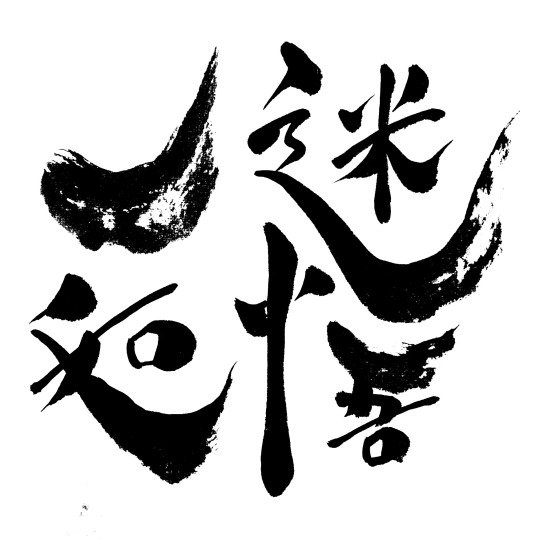#書道作品

Yin is dark, cold, receptive, magnetic.
Yang is light, hot, giving, active.
Both are present in everything. Day is Yang, Night is Yin. But during a Yang day, one will have periods of Yin rest.
Yin-Yang is also an important concept in Japanese art. In the calligraphy above, outward brush-strokes are Yang and should be painted freely. Inward brush-strokes are Yin, and should be painted tightly.
Even in as mundane an activity as cooking, one finds Yin-Yang. In Japanese cooking, there are Yang knives which are used blade-outwards, and Yin knives which are used blade-inwards. Yin-Yang also applies to the ingredients. The leaves of a plant are Yin, but the roots of a plant are Yang. As with everything, a good balance is necessary.
In the image above I intended to make the “yang” round like the sun. It also resembles an “enso”, a hand-drawn circle which in Buddhism signifies the circle of life.

It is precisely the act of pushing against limits, stretching them, bending them, playing with them, which leads to interesting artistic expression.
In other words, in order to push boundaries, there have to be boundaries there in the first place.
This is very true of Japanese calligraphy. As an artform it is incredibly restrictive. The boundaries are clear and unequivocal… so it’s all the more impressive when a calligraphy artist successfully transcends the boundaries, expressing Japanese characters in a unique and moving way.

不 = not
言 = speaking
実 = actually
行 = doing

The second and fourth character in this famous 4-character idiom are both 心, which means “heart”. This idiom refers to heart-to-heart communication; speaking without words.
Kaizen is a Japanese term meaning “change for the better” or “continuous improvement.” It is the Japanese business philosophy of continuously improving operations. Kaizen sees improvement in productivity as a gradual and methodical process.
The kaizen concept asserts that there is no perfect end. Everything can be improved upon, and all employees must strive to evolve and innovate constantly.

“Gaman” is a zen Buddhist term which loosely translates to “enduring the unbearable with patience and dignity”.
In Japan, putting up with a seemingly unbearable situation is seen as a sign of maturity. In the notoriously tough Japanese workplace, employees are expected to “Gaman” as much as possible.
You can read more about it here:
https://www.bbc.com/worklife/article/20190319-the-art-of-perseverance-how-gaman-defined-japan

七 = seven
転 = fall over
八 = eight
起 = get up
One of my favourite Japanese 4-character idioms!

Cherry blossoms, arguably Japan’s most-loved flower, are at their peak in April. Many Japanese people enjoy taking trips to local parks and tourist hotspots specifically to enjoy the beautiful pink blooms.
One of the reasons they are so well-loved is that they bloom for such a short time. Transience holds an important place in Japanese culture; the more transient an object, the greater its beauty.


Being confused ain’t necessarily so bad :)
